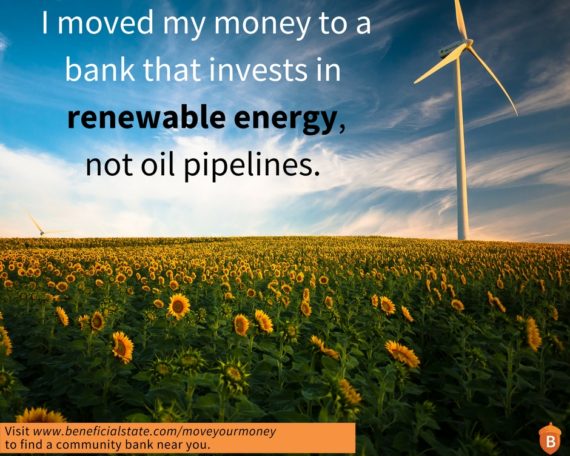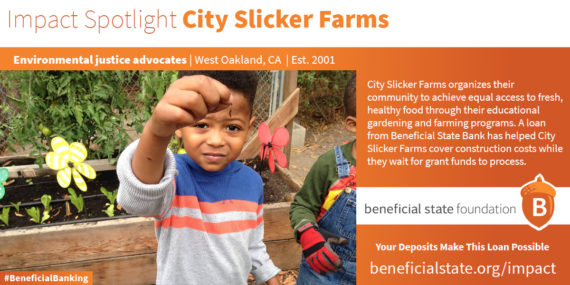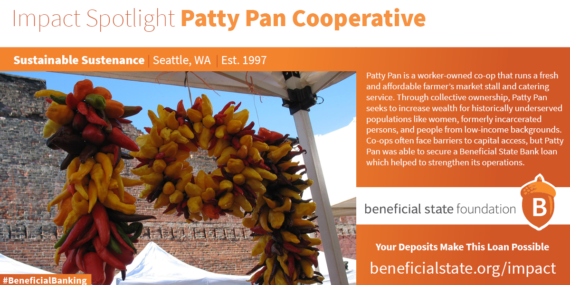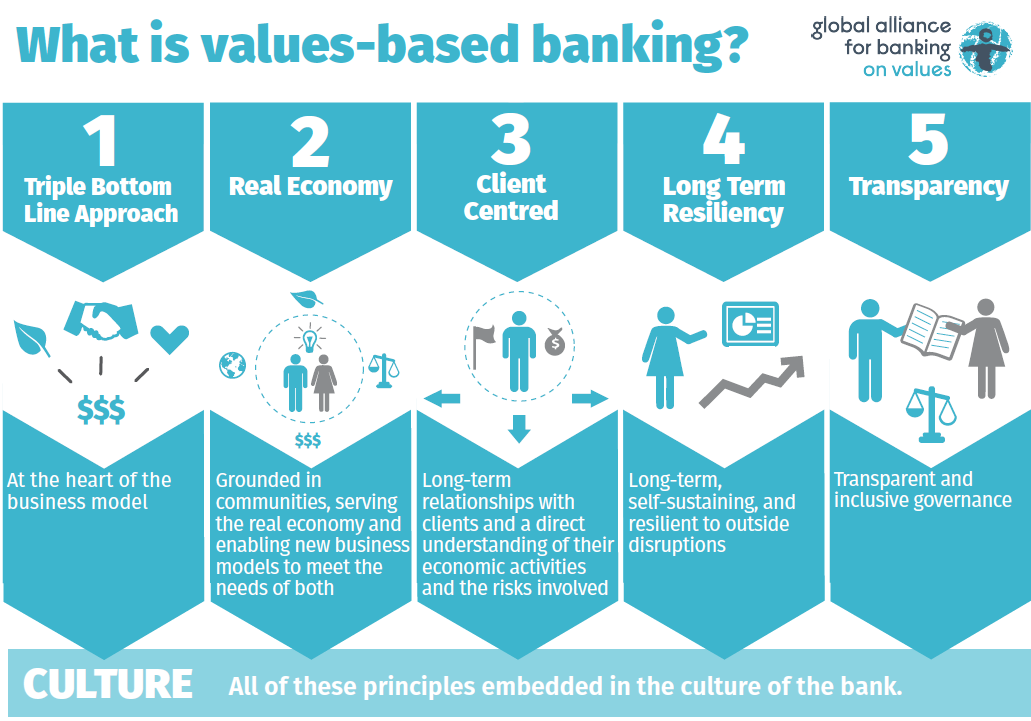How do I know if my bank is good?

Jhana is Beneficial State Foundation’s Social and Environmental Impact Associate based in Oakland, CA.
“How do I know if my bank is good?”
When I was first asked this question, I was surprised and a little embarrassed that I didn’t have an answer. At the time, I’d started an internship at Beneficial State Foundation and experienced how easy it was to move my money into a community bank. I was energized to see the Defund DAPL movement gaining momentum. I was trying to convince my best friend that not all banks were bad and that many banks and credit unions actually do a lot of good in their communities so she should move her money to one of them. I didn’t have a name for it at the time, but I was encouraging her to join the Banking on Values movement.
Banking on Values
The Banking on Values movement, led by the Global Alliance for Banking on Values, aims to positively change the banking sector by influencing the ways in which banks and other financial institutions serve human needs, our environment, and the real economy. Consumers can engage in the Banking on Values Movement by encouraging their bank to adopt values-based banking principles or by moving their money to bank that already does.
My best friend was pressing me, as she often does, to get to the heart of the matter: “Are there principles or practices that distinguish a good bank? How do I know if my bank is upholding these principles? How do I know that my bank isn’t funding projects I don’t support, like the Dakota Access Pipeline?”
The Banking on Values movement reminds us that our deposit dollars don’t just disappear.
Underlying the over-simplified binary of “good” and “bad” banks are our values. I value fairness and equity. So when I hear about a bank charging people of color higher interest rates than white people, that goes against my values and I don’t want my money to support those practices. When I learn that my bank actively supports projects that preserve and develop affordable housing, I feel proud to bank with an institution that aligns with my values.
The Banking on Values movement reminds us that our deposit dollars don’t disappear into a black box. That money is recirculated in the economy, either by investing in the people and products we see in the real economy, or participating in the financial economy of stocks, securities, and speculation. Values-based banks demonstrate that a bank can generate positive social and environmental impact and remain financially sustainable by making loans directly into the real economy.
Measuring a bank’s impact
In my role I track and measure the impact metrics of Beneficial State Bank, a values-based bank. We look at numerous social and environmental indicators of our bank’s loans, from the number of kilowatt hours produced by clean energy projects to the number of small and local businesses that have distributed ownership models, such as cooperatives. This work has given me an in-depth understanding of how good banking can be translated into concrete indicators, policies, and practices that can help any one of us determine if our bank is aligned with our values.
I often think back to my friend’s questions because they remind me that the impact metrics I’m collecting can help a consumer make an informed decision about where they bank. My hope is that one day all banks measure and publish not only their financial indicators of success, but also their social and environmental impact metrics. Drawing upon the work of the Global Alliance of Banking on Values members, who are working together to develop best practices for impact measurement, I’m now much more equipped to answer my friend’s questions with concrete examples.
Here are some principles and practices that distinguish a “good” bank:
To determine if your bank is upholding these principles and practices, you might have to do some digging:
- Read through your bank’s website. Do they share a mission and vision that resonates with you? Do they provide concrete examples of how they are living up to this mission? Do they publish information about what they’re not supporting, such as private prisons and pipelines?
- Talk to your banker. How is the bank involved in the community? Do they have special products or pricing that serve communities that have historically been left out of the banking system?
- Check their certifications and associations. If your bank is a certified Community Development Financial Institution, Community Development Credit Union, or certified B Corporation, or a participant in the Global Alliance of Banking on Values or Community Development Bankers Association, there’s a good chance they’re a values-based bank.
Thanks to dedicated organizations, you can check if your bank is funding certain projects that have negative social and environmental impacts:
- Food and Water Watch will tell you if your bank has funded the Dakota Access Pipeline.
- Rainforest Action Network will tell you if your bank is funding activities that directly contribute to climate change.

For me, values are at the heart of the matter, whether I’m picking out food at the grocery store, deciding how to spend my free time, or putting my money into a bank or investment vehicle. I know that we all have a unique blend of values, but I think there are as many similarities among people as there are differences. I think many of you would agree that you don’t want your money working against you. And so, if you only saw your bank’s purely financial statements, that information alone wouldn’t convince you that your bank is good. I think you’d want more comprehensive information. The Banking on Values movement has inspired me to consider us all as stakeholders of the banking industry. As a depositor stakeholder, I want my bank, which holds my money, to support the communities and ecosystems that sustain, nourish and make my life beautiful. What do you want from your bank?
For more tips on how to find a values-aligned bank near you, check out our Move Your Money toolkit.
This blog post reflects the author’s personal views and opinions, and does not represent the views and opinions of Beneficial State Bank and/or Beneficial State Foundation.



